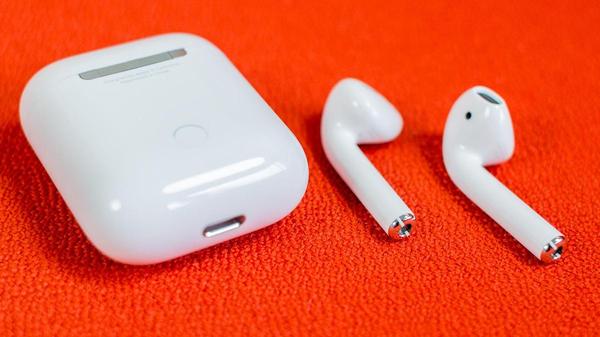Whether you’re thinking about AirPods as a gift or a wireless earbud upgrade for yourself, it’s important to think about how they’ll be used so you can determine if they can stand what you’re going to throw at them. For example, wearing a pair of AirPods in the rain or while sweating during a workout might not be a good idea as early AirPods, AirPods Max, and AirPods Pro models all have different levels of water resistance. So if you want to avoid damage, you should know what to watch for.
ContentsLet’s break down how waterproof each AirPods model is and what their water-resistance ratings mean for your daily activities.
These first-gen AirPods aren’t technically available anymore — Apple doesn’t sell them directly. You may be able to find some from retailers or on platforms like eBay, but they’re increasingly rare, especially as a new product still in the box.
However, if you do find a pair or already have a first-gen pair and are wondering about upgrading, keep in mind that these early AirPods don’t have any water resistance. None at all. Encounters with splashing water, like raindrops or sweat from exercise, can damage these AirPods. There are some AirPod accessories that can help waterproof your charging case, but not the AirPod earbuds themselves.
The AirPods 2 updated a number of technologies, but one thing they didn’t change from the first-gen was water resistance: They have none. You aren’t going to want to take these AirPods out in the rain or anyplace they can get wet.

For the AirPods 3, Apple made a slew of updates to both the audio features and design. But one very important update was adding water resistance to the line at last.
The AirPods have an IPX4 water-resistance rating. This is a rating type created by the IEC (International Electrotechnical Commission) and is commonly used for all types of headphones and earbuds, among other electronics.
IPX4 specifically means that the AirPods 3 are resistant to “water splashes from any direction.” That’s somewhat technical, but it basically means that the AirPods 3 are fine to use in the rain, while sweating, while cooking, etc. If you are looking for AirPods that you can safely use while jogging or working out in any kind of weather, here’s where that becomes feasible.
However, IPX4 does not mean these AirPods are entirely waterproof. You cannot submerge them safely for any length of time (that kicks in at IPX7), so don’t even think about wearing them swimming. You won’t be able to take a shower with them on, either, and it’s not a great idea to wear them near a body of water like a river or lake.
Now the flagship true wireless earbuds in Apple’s lineup, the AirPods Pro updated the design and controls for the AirPods, added new silicone tips for the fit, and gained a host of audio technology, from Spatial Audio to Active Noise Cancellation. Fortunately, they also include an IPX4 water-resistance rating, the same as the AirPods 3.
That IPX4 rating makes the AirPods Pro safe to wear in rain or during workouts, or in other situations where water may get splashed on them. As with the AirPods 3, you will want to avoid wearing them while swimming or accidentally dunking them in water.
The AirPods Max are in a slightly different category, as they are over-ear headphones instead of wireless earbuds. However, they lack any type of water resistance at all. Combine that with their over-ear design that makes them more susceptible to getting wet from rain or other sources, and you really don’t want to risk these AirPods. Keep them indoors whenever possible.
Accidents happen, and a quick spill can get an AirPod wet or submerge it entirely. That doesn’t spell instant doom for the hardy AirPods, but you’ll need to act fast for the best results:
Step 1: Get them out of the water or rain ASAP. Shut them off and disconnect them from your device.
Step 2: Wipe down the AirPods with a soft, clean cloth until you have removed all visible water. It’s OK to give them some gentle shakes to encourage water to leave any crevices.
Step 3: Set your AirPods in an open, dry spot where they are safe. Make sure you leave them out of the case (never put AirPods that might be wet back in the charging case). Leave them out to fully air dry for at least 12 hours: If it was a thorough dunking, you’ll want to wait at least a full day. Do not use compressed air, a hair dryer, or any kind of heat/heated air to dry the AirPods, as this may cause further damage.
Step 4: Once you are done waiting, place the AirPods back in the charging case and charge them again, then attempt to reconnect.